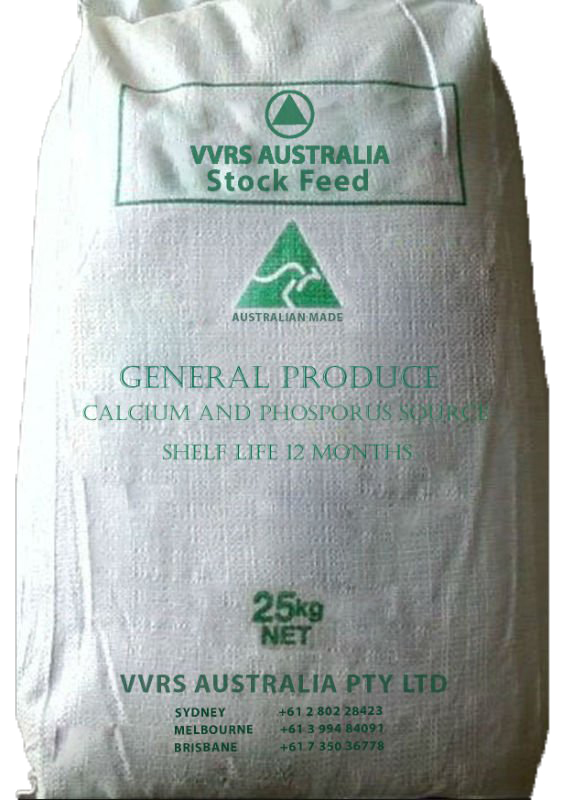BRISBANE: +61 7 350 36778 MELBOURNE : +61 3 994 84091 SYDNEY: +61 2 802 28423

PRODUCT DESCRIPTION
Calcium and phosphorus sources can be classified into those which supply calcium only, or those that supply predominantly phosphorus. Some sources supply calcium and phosphorus as well as other inorganic elements.
Calcium carbonate is the most common form of calcium included in diets for all animals and is available as limestone, seashells or coral.
Limestone is by far the most common and is usually the cheapest source of calcium. It is available either as a pulverised powder or in granular form. Sea shells, including oyster shells, conch shells, clam shells, coral and coral sand are in granular form and consist of almost pure calcium carbonate (95 to 99 percent).
With the sources of phosphorus, the total phosphorus content and the availability (biological values) of the phosphorus should be considered.
A review of phosphorus supplements has shown that phosphorus from tricalcium phosphate, dicalcium phosphate, monocalcium phosphate, monosodium phosphate, monopotassium phosphate, potassium acid phosphate, sodium acid phosphate, and bone meal or bone ash, are highly available with biological values above 90 percent.
The phosphorus from raw rock phosphates, defluorinated rock phosphates, pyrophosphates and phytates have lower and variable biological values (30 to 90 percent). Rock phosphates also contain fluorine in a highly toxic form. The defluorinated of rock phosphate has a positive effect and the biological value can be improved to an average of about 85 percent.
DIRECTIONS FOR USE
• Calcium and phosphorus sources can be included in feeds for all animals as part of a balanced diet. It is important that there is not excessive levels of calcium or phosphorus in the balanced diet.
• Pulverised forms of calcium carbonate are preferred in diets for pigs and young poultry, horses and ruminants. Calcium carbonate is an essential ingredient in the diets for laying hens for the production of good egg shells. It is preferred to include both the pulverised and granular forms of calcium carbonate in diets for laying hens. The larger particles of calcium aid shell quality due to the longer retention in the gut. This promotes a more constant supply of calcium to the body during the night when most of the shell is formed.
• Dolomitic limestone which contain high levels of magnesium (greater than 5 percent magnesium carbonate) must not be fed to laying hens, since the high levels of magnesium can affect egg shell quality and increase the incidence of wet droppings.
• Calcium sulphate (gypsum) can also be used as a calcium source instead of calcium carbonate and the calcium is just as readily available.
• Insoluble calcium sources, such as calcium oxide or calcium hydroxide (slaked lime), should not be used in diets for pigs and poultry, horses or ruminants.
• It is recommended that only those phosphates of high biological value be included in the diets of animals. Sources with low biological values includes the metaphosphates, pyrophosphates, acid pyrophosphates and some of the raw rock phosphates. Also phosphates containing significant levels of fluorine should be restricted in the diets of animals.
STORAGE
Cool, dry conditions away from vermin.
PACK SIZE
Bag sizes vary.
Bulk load details available from your sales representative.
Dry Lick (Cattle)